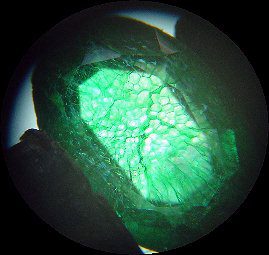Enhanced Gem Inclusions
Gem treatments can affect a stone’s value and stability. Learn how the most common procedures work and how to identify enhanced gem inclusions.
3 Minute Read
Related Articles
Eight Opal Types Explained
Opal is a complicated gemstone, and many factors affect its price. Learn how to distinguish these eight opal types and...
Read More
Center-Fused Color Treated Gemstones
Center-fused color treated gems are assembled from natural rough. Learn how the procedure works and how to identify this stable...
Read More
Distinguishing Aquamarine Imitations
How can gemologists quickly distinguish aquamarines from aquamarine imitations? We’ll review some common lookalikes and their most notable differences.
Read More
Destructive Gemstone Tests: Streak Testing
Streak testing is a destructive gemstone test rarely used by gemologists, but it is a standard diagnostic test for mineralogists....
Read More
Latest Articles
800 Years of Mogok: A Celebration in Tenuous Times
As Mogok, Myanmar prepares to celebrate its 800th anniversary, the inhabitants of this prolific gem producing region face an uncertain...
Read More
What is the Average Gemstone Faceting Yield?
What’s the average gemstone faceting yield from a single piece of rough? Learn how to estimate how much material you’ll...
Read More
Pyroxmangite Value, Price, and Jewelry Information
Pyroxmangite grains are rare, seldom clean enough to facet, and difficult to cut. However, when cut, they are extremely beautiful...
Read More
How to Identify Emerald Simulants and Synthetics
Gemologists can separate natural emeralds from emerald simulants and synthetics. Learn about the most common tools and techniques for this....
Read More
Never Stop Learning
When you join the IGS community, you get trusted diamond & gemstone information when you need it.
Get Gemology Insights
Get started with the International Gem Society’s free guide to gemstone identification. Join our weekly newsletter & get a free copy of the Gem ID Checklist!
